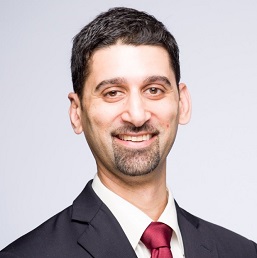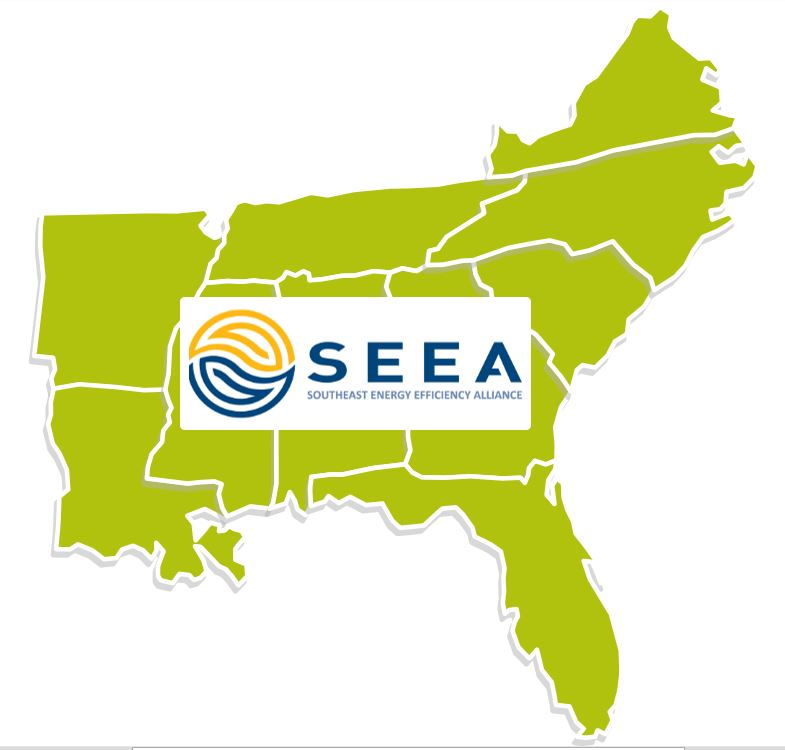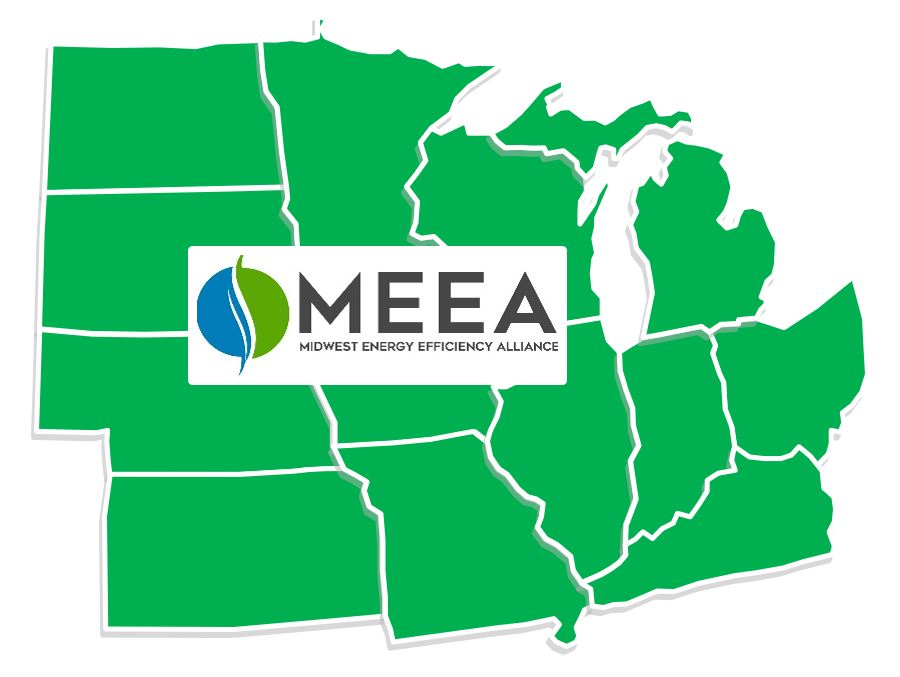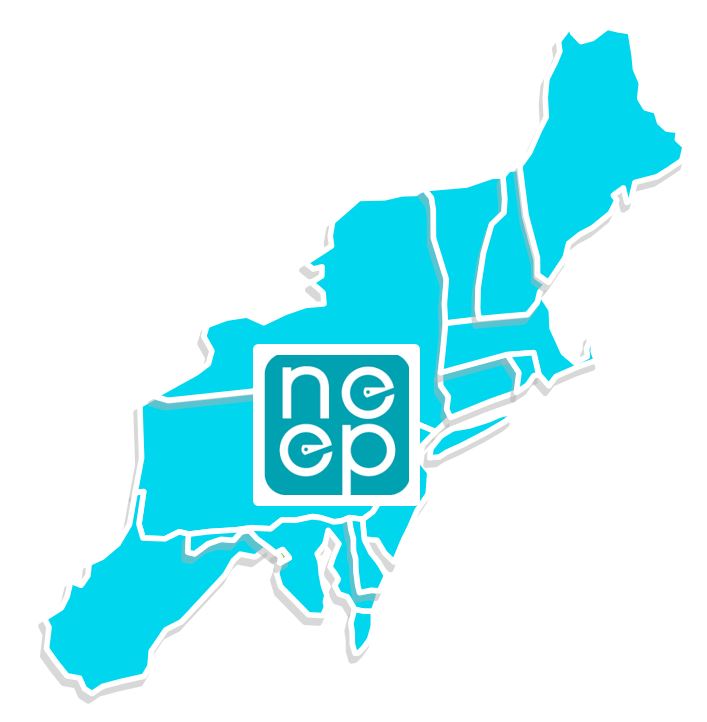REEOs report on NSPM developments in their region
by guest authors Cyrus Bhedwar, Greg Ehrendreich, Samantha Caputo, and Elizabeth Titus
Two years ago, the National Standard Practice Manual (NSPM) debuted and began to bloom. With spring upon us once again, we asked several of the regional energy efficiency organizations (REEOs) for their key insights thus far on interest, use, and application of the NSPM in their respective regions. Representatives from three REEOs share their perspectives below and discuss progress on states’ efforts to review cost-effectiveness testing practices using the NSPM framework.
Southeast Energy Efficiency Alliance (SEEA)
Cyrus Bhedwar, Director of Policy


Bhedwar: We’ve had conversations in Georgia, North Carolina and Virginia. Louisiana also recently referenced the NSPM in its draft EE rules. The furthest along is Arkansas, already a national leader on energy efficiency. Arkansas earlier determined what non-energy benefits (NEBs) might be included in their cost-effectiveness testing regime, and incorporated three NEBs (per its TRM Protocol L); however a subsequent PSC order required the Parties Working Collaborative (PWC) to review their cost-effectiveness testing practices, including consideration of how to account for carbon impacts, using the NSPM framework per Order No. 27, Docket No. 10-100-R and Order No. 40, Docket No. 13-002-U.
2. Is there a state that’s particularly interesting in how they’ve considered the NSPM? What has made that process work well, and what are key challenges you’ve encountered?
Bhedwar: Yes, again, in the case of Arkansas. The PWC really took ownership of the process, with assistance from NSPM experts. Commission staff first compiled a list of applicable policies addressing energy efficiency, which helped to identify relevant impacts. A well-honed task force process then created the recommendations submitted to the Commission, as mentioned above. See the NSPM Case Studies for a detailed description.
As this blog was set to publish, we learned that the Commission issued an order (Order No. 31, Docket No. 10-100-R and Order No. 48, Docket No. 13-002-U) instructing the PWC to further provide recommendations on how it can address many of the inconsistencies between current cost-effectiveness testing practices and the principles described in the NSPM, in particular with regard to asymmetrical treatment of costs and benefits. We look forward to providing an update once the PWC has made progress in responding to the Commission’s order
3. Are there misconceptions about the NSPM that have made it difficult to gain stakeholder support?
Bhedwar: Anecdotally, I have heard that utilities can perceive the NSPM as being “all about NEBs” and express concern about the potential for increased non-participant impacts that result from a larger EE portfolio (and associated rider). More broadly, however, it seems that EE advocates who work in the regulatory context feel as if they have a grasp of specific cost-effectiveness issues they aim to address and are worried that a more comprehensive approach to addressing cost-effectiveness might have unintended consequences. We are continuing to work with stakeholders to address these concerns by offering targeted technical assistance to ensure they understand, for example, that the NSPM is a policy-neutral framework that does not advocate for or against the inclusion of any particular cost or benefit.
4. To what extent are states in your region looking at, or interested in, developing a common cost-effectiveness framework for all distributed energy resources (DERs), and what is driving this interest?
Bhedwar: Arkansas has opened a docket (R-16-028-U) and is launching a stakeholder education and engagement process to better understand the impacts of DERs and grid modernization on the state’s utility system. Given the Commission’s and stakeholders’ strong track record of deliberately and comprehensively considering issues, it would not surprise me if they develop a cost-effectiveness framework for DERs. Clearly, the NSPM could play a helpful role in establishing a cost-effectiveness framework for DERs as it can apply to resources beyond energy efficiency.
Midwest Energy Efficiency Alliance (MEEA)
Greg Ehrendreich, Research Analyst


1. How many states in your region have taken an interest in the NSPM, and how did they become engaged?
Ehrendreich: Two Midwest states have taken substantial interest in the NSPM. In Minnesota, the Department of Commerce used dedicated R&D funding from the state’s Conservation Improvement Program (CIP) to commission a study to evaluate the state’s benefit-cost tests using the NSPM framework. In Missouri, an ongoing working group formed under the statewide Missouri Energy Efficiency Advisory Collaborative (MEEAC) has been discussing non-energy impacts (NEIs) and how they could be considered in benefit-cost testing. MEEA is part of that working group and helped to bring the NSPM into the discussion this year.
2. Is there a state that’s particularly interesting in how they’ve considered the NSPM? What has made that process work well, and what are key challenges you’ve encountered?
Ehrendreich: The Minnesota case study is the most comprehensive consideration of the NSPM in the Midwest. Central to its success was direct funding to complete the study and the report. Cooperation among stakeholders – regulators, utilities and advocates – for details and discussion was also essential.
The challenge now is implementing the recommended changes to Minnesota’s benefit-cost testing. The report provided short- and longer-term work plans for considering these changes; advocates in Minnesota see the opportunity to start on those work plans right away.
In context, Minnesota’s investor-owned utilities were given a one-year extension on their 2017-2019 CIP plans. The next plan will be for 2021-2023. Prior to the plan extension, the Department of Commerce opened dockets to set the statewide inputs for benefit-cost testing in the next natural gas and electric CIP plans Dockets 18-782 and 18-783, respectively). Now, with the extra year before new plan filings, advocate comments from the American Council for an Energy Efficient Economy, the Center for Energy and the Environment, Fresh Energy and the Minnesota Citizens Utility Board have all recommended an extended stakeholder process rather than the currently-expected final decision at the end of May 2019. Key issues for advocates include symmetry between benefits and costs addressed in the tests, discount rates used, and transparency of avoided cost calculations.
Official response to advocate comments remains to be seen, but there is an opportunity to make real progress toward application of the NSPM principles and framework in Minnesota.
3. Generally, have states in your region had any particular data needs with regard to certain impacts (utility system or non-utility system) that are difficult to find/quantify?
Ehrendreich: Having previously noted that the NSPM doesn’t specify inclusion of NEIs or which NEIs should be part of a state’s test, the NSPM is still one of the most useful tools for the Midwestern states investigating the NEI question. Even established bodies of associated literature for NEIs, like air quality improvements, don’t necessarily provide values that are state-specific or use the most current assumptions. It’s a lot of work to get values for NEIs accepted by stakeholder groups and approved by commissions. The NSPM framework is a way to focus on the impacts that are most relevant to state policies, instead of spending resources to quantify a broad range of impacts, some of which won’t actually impact EE valuation.
In states where utilities have been running efficiency programs for a decade or more, choosing NEIs relevant to a state’s policies will be important to justify programs targeting measures on the benefit-cost margin under the current testing regime. To keep achieving savings as markets change and baseline efficiency standards increase, NEIs will be the ladder to higher-hanging cost-effective efficiency program “fruit.”
In our states that are less experienced with energy efficiency, the NSPM framework adds different value regarding NEIs. Places where commissions are less inclined to approve substantial EE portfolios may face skepticism about the value of efficiency – even if benefit-cost tests show a net benefit. The NSPM proposition for those states is:
• deconstruct cost-effectiveness tests so all inputs are well understood;
• make sure they are aligned with state policies;
• identify impacts that are politically or economically important to stakeholders that aren’t currently considered in EE cost-effectiveness tests, which could demonstrate unrecognized value of EE to regulators
Northeast Energy Efficiency Partnerships (NEEP)
Samantha Caputo, Senior Policy & Research Associate
Elizabeth Titus, Director of Research & Evaluation



Caputo and Titus: Various states have taken an interest, such as New Hampshire, Massachusetts, Connecticut, and Pennsylvania. Some were introduced to the framework through NEEP’s EM&V Annual Meeting, and/or NEEP webinars that included the NSPM. These presentations highlight why the framework should be used for updating cost-effectiveness and how it has been done around the country. New Hampshire became interested in the NSPM when the PUC approached NEEP to provide technical assistance in understanding the non-energy impacts other states were including in their cost-effectiveness testing.
NEEP completed a report summarizing key findings from NEIs reviewed in literature, technical reference manuals, utility annual reports, and proceedings regarding cost-effectiveness in practice. This report encouraged the PUC to consider the NSPM when updating its cost-effectiveness testing. NEEP also provided in-person presentations to PUC staff. In Connecticut, DEEP requested that we facilitate a public workshop on cost-effectiveness covering the NSPM, NEIs, and an overview of current practice throughout the region. Connecticut is now following the NSPM principles to update their cost-effectiveness testing, with a proposal expected sometime this spring.
2. Is there a state that’s particularly interesting in how they’ve considered the NSPM? What has made that process work well, and what are key challenges you’ve encountered?
Caputo and Titus: New Hampshire, where cost effectiveness advances are under construction. Per DE 17-136, the order approving the NH Statewide 2018-2020 Energy Efficiency (EE) plan 2019 Update, two Energy Efficiency Advisory Council working groups are actively involved in CE testing. The Benefit/Cost (B/C) Working Group and the EM&V Working Group. The former is the technical lead in two studies: one analyzing cost effectiveness; a second, concerning energy optimization (also referred to as fuel switching). The B/C Working Group will review issues involving potential NSPM use to screen EE programs. The EM&V Working Group will explore how to treat the benefits and costs associated with energy optimization.
Both studies include relevant state energy policy review and are being conducted with consideration of the NSPM. Recommendations will be submitted to the NH Public Utilities Commission by August 2019, to help develop the second triennial plan.
3. Are there misconceptions about the NSPM that have made it difficult to gain stakeholder support?
Caputo and Titus: In Connecticut, a stakeholder was skeptical about using the NSPM to update the CT test because it was perceived as a “national framework.” The idea behind their question was: If the point is to develop a state-specific test accounting for state policies, why would a national framework be used? It’s important to clarify that the principles identified in the NSPM provide a framework relevant for any state. The framework gives states the flexibility to build their own tests based on their applicable energy policies and to apply basic economic principles such as the symmetrical treatment of costs and benefits rather than being restricted by the boundaries of the traditional cost-effectiveness tests (e.g., TRC). The NSPM ensures, and provides transparency, that the test used is consistent with the reasons the state is making the investment in EE resources.
4. To what extent are states in your region looking at, or are interested in, developing a common cost-effectiveness framework for all DERs, and what is driving this interest?
Caputo and Titus: In NEEP’s region, Rhode Island is a potential exemplar for exploring cost-effectiveness with a DER context. The driver for Rhode Island was its Power Sector Transformation Initiative. Through this initiative, RI is looking at performance incentive mechanisms that incent cost-effective DER, including efficiency performance mechanisms and non-wires alternatives (NWA) to reduce distribution system costs. Another example is Vermont’s Green Mountain Power which runs programs promoting PV and storage and DR. Based on a review of 3-year plans in several states, (CT, MA, NY, ME, RI) other states are beginning to think about energy efficiency in the context of NWA or in other DER contexts. Rhode Island led the charge on this through the development of the Rhode Island Test, adopted via Docket 4600, which covers all DERs and is based on the NSPM principles, pre-NSPM publication. This example can be looked to as a best practice by other states considering evaluating their own cost-effectiveness testing.
Supporting Resources: A Key Database
The REEO representatives also find value in resources that can help states better understand current and evolving cost-effectiveness testing practices around the country, as well as available guidance documents to help estimate a wide range of efficiency cost and benefits. We asked the REEOs about their experience using the Database for State Efficiency Screening Practices (DSESP) to help understand and review practices in their region, and what features they find most useful.
Ehrendreich: MEEA uses the DSESP, for example, when I created overview slides of testing in different states using the NSPM “wheel” format. It was helpful to have everything in one place, in a consistent layout and common terminology, and to have the references to primary sources when I needed to clarification. I’ve recommended it to others who are interested in tracking how cost-effectiveness tests were being done across our region. It is also helpful for comparing states outside our region whose policies and practices I’m less familiar with.
Caputo and Titus: The Summary of states and single state view are very helpful. We use the summary page for quick reminders about a state and to identify trends in the region. It is particularly helpful for the NEIs to identify quantitative, monetized, proxy, or alternative measurements.
Bhedwar: I am looking forward to the expansion of the DSESP to include the majority of the Southeast and expect it to be an essential resource as we continue this work. Note: SEEA’s feedback reflects that the DSESP will contain information from all states by the end of 2019.
Many thanks to Cyrus, Greg and Samantha for their input!
If you have questions on their responses, please contact them at:
Cyrus Bhedwar: cbhedwar@seealliance.org
Greg Ehrendreich: gehrendreich@mwalliance.org
Samantha Caputo: scaputo@neep.org
To learn more about the National Standard Practice Manual, including state case studies, template tables, and the DSESP, visit the NSPM website.
Want to stay updated on NSPM News? The News page is a good way to keep up-to-date on cost-effectiveness through articles, newsletters, webinars, etc. To learn about upcoming NSPM related presentations and relevant events, see Events.
